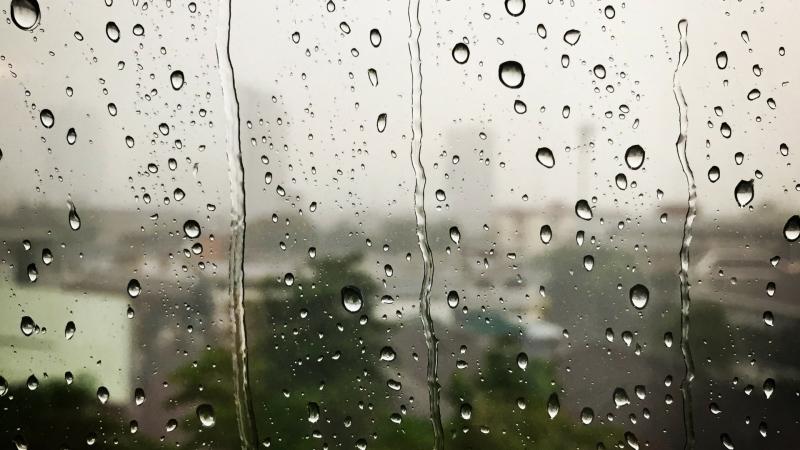
The flood on 1st December 2015 in Chennai brought the fourth most populous city in India to a standstill. The incessant rains caused economic damages amounting to $3 billion, and at least 250 people lost their lives. The El-Nino climatic cycle impacted the 2015 northeast monsoons during October-December. The areas at the Coromandel coast were the worst affected by flooding. While the role of climate change in that floods is still debated, what role did the geography of the city play? Understanding this will help in forecasting such events in future.
A new study by a researcher at the Indian Institute of Science, Bengaluru, has explored the role of the Eastern Ghats, located at a distance of 200 km from Chennai, in the devastating floods of 2015.
Chennai receives most of the rains from the northeast monsoon, when cyclonic systems, also known as ‘depressions’, form over Bay of Bengal and make landfall over the southern east coast of India. During 2015, the city saw three 'heavy rainfall' periods; the first lasting from 7th–9th November, the second from 14th–16th November, and the third from 30th November–2nd December. On 1st December, the city witnessed as much as 494 mm of rain in less than 24 hours, the odds of this occurring are once in at least 100 years.
Although computer models forecast rainfall, analysis of weather conditions which lead to such unforeseen event is necessary to trust and further improve these models. In this study, the researcher points out that the raining clouds were stationary over Chennai on 1st December 2015. The study also proposes a mechanism by which clouds can be blocked by the Eastern Ghats remotely over the coast. The study also proposes a mechanism by which clouds can become stationary over the coast involving interaction between clouds, mountain and wind.
“When it rains, the raindrops evaporate, cooling the air in that region. This chunk of cold air over the surface is known as the 'cold pool'. It takes more energy to lift the denser cold pool over the mountains. At certain speeds, the winds lack the energy to carry the cold pool over the mountains, but have enough to hold them against the mountain”, explains Mr. Jayesh Phadtare, a research scholar from IISc and the author of the study reported in Monthly Weather Review published by the American Meteorological Society.
Detailing the turn of events on the fateful day of 1st December, Mr. Phadtare says, “When the energy of the winds is almost equal to that required to climb a mountain, the cold pool becomes stationary, and its edge can extend about hundreds of kilometres ahead of the mountain. The warmer, and hence lighter, oceanic winds get uplifted well ahead of the mountain by the cold pool. Thus, the winds get blocked even before they reach the mountain walls by the invisible walls of the cold pool. This ‘upwind blocking' (upwind to the mountain) of winds occurred on 1 December 2015 over Chennai.”
The study used the Weather Research and Forecasting (WRF) model, developed by National Center for Atmospheric Research (NCAR), USA, that solves mathematical equations for weather forecasting. It is used by weather agencies all over the world, including the India Meteorological Department (IMD). The researcher validated the mechanism in the model with two experiments – the absence of orography and no evaporative cooling of rain. In both cases, clouds were not stationary over Chennai, implying that the Eastern Ghats obstructed the cold pool from moving downstream, thus stagnating the clouds. Continuous catastrophic rainfall that followed drowned Chennai.
The study is not the first to show that mountain features affect precipitation. “There are studies done over the California coast, over the west coast of Taiwan, and even over our Western Ghats where mountains influence the coastal rainfall”, says Mr. Phadtare. “But each region is unique with its own geographical settings, the weather patterns that develop are also different. Although one can draw some analogies, rules that apply over one region may not be valid over the other. However, the Eastern Ghats is a more complex mechanism and was not yet identified. In that sense, this modelling study is unique” he adds, talking about the implications of this study.
Cities and municipalities indeed have a significant role to play in ensuring floods and similar disasters are managed well by clearing clogged stormwater drains and cracking down illegal encroachment of water bodies. However, studies like this will improve our forecast of extreme rainfall and help to step up disaster preparedness and better management strategies.
The work was supported by the high performance computer (HPC) system facility at CAOS, IISc, funded by the Department of Science and Technology under Fund for Improvement of Science and Technology Infrastructure in Universities and Higher Educational Institutions (FIST) scheme and Divecha Center for Climate Change (DCCC).






